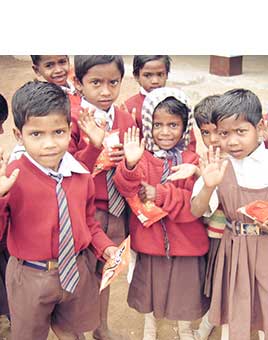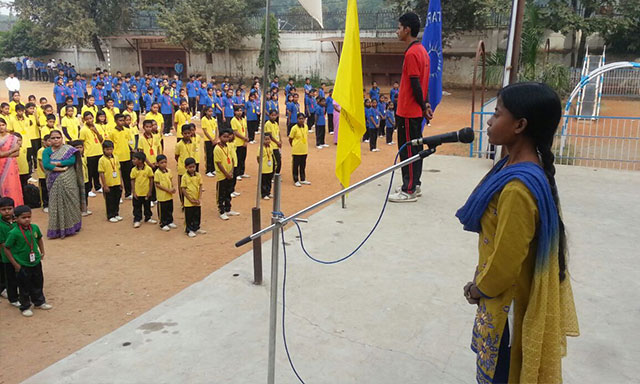Literacy in India
In rural areas, children are two times less likely to attend school than their urban counterparts. Typically, the most impoverished children are the least likely to be able to attend.
There are about 61 million children in the world without access to education, or one out of every 10 children. This equites to roughly 49 percent of these children, predicted to never enter a school.
More than 95 percent of the children without access to education live in the developing world. For families living in poverty, the quest for education presents itself as a double-edge sword: Not only is school too expensive, but their families need more field-work help to provide income, or help gathering water for the family.
One study found out that 25% of public sector teachers and 40% of public sector medical workers were absent during a survey. Among teachers who were paid to teach, absence rates ranged from 15% to 71%. Only 1 in nearly 3000 public school head teachers had ever dismissed a teacher for repeated absence. A study of 188 government-run primary schools found that 59% of the schools had no drinking water and 89% had no toilets.
The United Nations Universal Declaration of Human Rights states that everyone has the right to an education. Unfortunately, education is still a distant dream for many.
Many children living in rural areas receive a level of education which is very poor. Overall enrolment in primary and middle schools are very low. Fifty percent of children living in these areas leave school before the fifth grade. These children leave school for a variety of reasons: some leave because of lack of interest; most leave so that they can work in the fields, where the hours are long and the pay is low.
A large percent of the dropouts are females. Forced by their parents, most girls perform chores and tend the family at home. These are some of the reasons why sixty percent of all females in India are illiterate, a figure much higher than those of males. As these children grow into adults, many are still illiterate by the age of forty. These uneducated adults are also reluctant to send their own children to school because of their own failure in the education system. This in turn creates a problem for the next generation.
While the children living in rural areas continue to be deprived of a quality education, part of the reason why is due to their teachers. A large number of teachers refuse to teach in rural areas and those that do are usually unqualified. As the lack of teachers creates many obstacles for children in rural schools, creating another setback is the lack of resources. Lack of books and other reading materials is also a widespread problem. The use of high-tech devices such as computers is very rare. The overall condition of the schools are poor, with inadequate facilities. The local of the schools can vary from a warehouses to the use of a small house. Many of the rural schools operate without electricity.
Education Rights
Concentrating our attention on two of the worst states for literacy we have setup schools in both Jharkhand and Orissa.














